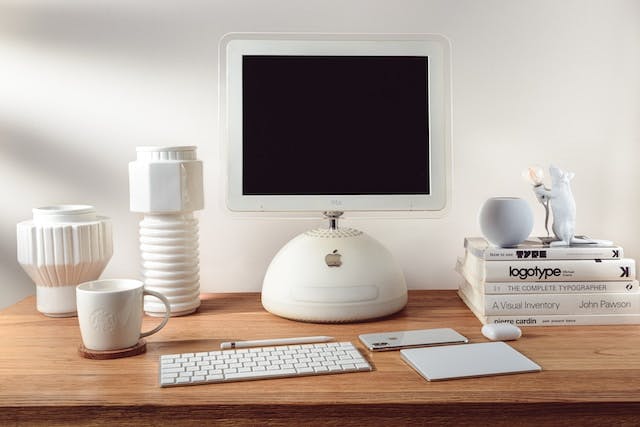Updated: January 24, 2024 - 7 min read
Editor's note: the following is a guest blog post from an external contributor
Mobile and desktop products are two very different beasts. Being a Product Manager on either requires different skill sets and considerations. Let’s understand the differences between desktop products and mobile products through a variety of lenses including design, user behavior, and patterns, and the adoption of mobile products and skills required for a PM for each.
Differences between mobile-first and desktop-first products:

Mobile-first products
When it comes to mobile, minimalism is the mantra.
To begin, let us define what a mobile device is. The definition of mobile has changed significantly over the years to not only include Android and iOS mobile devices but also iPad, and other tablets that are gaining popularity. Similarly, smaller devices like the Apple Watch or Samsung Watch have gained significant fame and users are demanding apps like Spotify and Instagram on these tiny screens.
All mobile products are not created equal. Mobile products for a B2B software company can differ greatly from a B2C mobile product.
Generally, all consumer-facing products are mobile-first products. This means their primary persona is a user on a mobile device and it was launched as a mobile-first product. Some examples include Instagram, Twitter, Uber, Google Maps and Amazon.
Mobile first products generally have a business model that closely aligns with the majority of the B2C products which are marketplaces, social media, or gaming. Mobile apps generally run on an Ad-based monetary model or subscription-based model.
Users expect a simple and butter-smooth UI and usually geared toward entertainment purposes.
Desktop-first products
Typically, all products that are launched first on the desktop also happen to be enterprise products. Then they later supplement their desktop offering with a mobile product, for example, Salesforce, Atlassian, Workday, DocuSign, and Intuit.
These B2B software generally work on an enterprise license purchased by the corporate and the user doesn’t need to see ads or in-app upsells.
Users care that they can complete their core activities with as minimal steps as possible and do not pay a lot of attention to high-quality user interaction.
Persona and User need

Mobile products
Limited time and attention: When designing a mobile product, you need to keep in mind that users are often on the go and have limited time and attention. So they need to be able to access them quickly and easily.
Hardware limitations: Be mindful of the battery life of your mobile device and the data usage of your app.
Distractions: Users are often using mobile apps in external environments with a lot of distractions, so you need to make sure your app is easy to focus on.
Limited in-app time: Users have limited time when they're using mobile apps, so you need to make sure your app is easy to use and navigate.
Desktop products
More time and space: Desktop products are used for more in-depth tasks that require more time and attention. Users typically are focused and want to achieve a specific outcome like closing a deal on Salesforce or documenting a process on Confluence.
Customization: Users often want to customize their desktop apps to fit their needs, so you need to make sure your app is flexible and customizable.
Software as a service: Desktop products are generally SaaS and do not require downloads or install updates at the client end and can be accessed via a browser.
Design considerations and metrics

Mobile products
Design considerations are hands down the most important aspect of designing a good mobile experience.
Usability and accessibility: Mobile has concepts of touch targets and gestures, so make sure to be easy to use with a simple, intuitive interface and accessibility. You need to make your app easy to use and navigate, with quick access to the most important features.
Mobile design concepts: Mobile has standardized call-to-actions and you should have a great eye for design and the end-to-end user experience. You should make design decisions based on a variety of user research techniques and A/B testing.
Battery life: Background app refresh and power consumption optimization are key non-functional design constraints you should keep in mind when designing mobile products. Optimize your app to save battery life.
Data usage: A portion of mobile users will always be on the go and when they are in an external environment, you should keep the data usage in mind. Your goal should be to minimize mobile data usage, especially for users who are on limited data plans.
Platform consideration: You must build, deploy, and maintain on 2 different platforms, (iOS and Android) and support various design
Metrics: The goal is always to increase engagement, number of downloads, monthly active users and for Ad based products, cost per click
Desktop products
Product Design: Desktop products have a cursor and columns where the web app is designed which gives you more control as you have a little bit of room to play around with and thanks to the screen real estate.
Security and reliability: Typically, desktop products that are B2B need to be battle-tested with very high reliability and uptime. You must keep your app secure with robust security features while not compromising on latency.
Features: The majority of the non-essential features on mobile can only be accessed on a desktop. Building everything in a native app is definitely very expensive so as a PM you may choose to build a few low interaction flows on the desktop. For example, the settings tab on Twitter opens up on a mobile web screen within the app.
Metrics: The goal here is not engagement, but rather a Key Performance Indicator (KPI) for the product as a whole like the number of envelopes sends for DocuSign or the number of deals closed in Salesforce
Skills to be a PM for mobile and desktop products

Mobile PMs
If you have a strong bend towards good design, and usability, and care about the user experience you should consider being a PM for mobile products.
Slower deployment cycles: Mobile PMs need to be forward-looking and should be able to move quickly. Since any new features can only be sent as app updates and you cannot force the user to download the latest version of the app repeatedly, mobile PMs need to plan release ahead of time and have a very small error tolerance
The importance of user acquisition: Mobile apps have a shorter shelf life than desktop apps, so mobile Product Managers need to focus on acquiring new users and keeping them engaged.
The need for a strong focus on design: Mobile apps are often judged by their design, so mobile Product Managers need to have a strong understanding of user experience design.
Desktop PMs: If you have a technical background, care about user pain points, and focus on high-quality reliable products with high uptime and such you should consider desktop Product Management.
Engineering bend: Having familiarity with software development can be a cornerstone in being a successful desktop PM. Desktop PMs often want to get involved in technical architecture decisions for their products
The need for a faster development cycle: Desktop PMs have the flexibility to be more agile and have a little more runway in terms of deployments as new updates can reflect as quickly as the next login, however, the focus should always be on uptime and reliability of the app.
Updated: January 24, 2024
